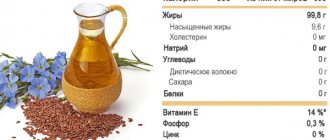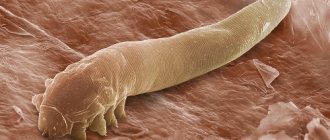Friends, hello everyone! We, the Valitov brothers, the leading authors of our blog, welcome you to this page to introduce you to Omega-6 fatty acid, which is essential for the normal functioning of the body of every person.
Today you will learn what Omega 6 is, what it is good for and what harm it can cause.
The need to raise this topic on our blog is explained by the fact that recently many people, and especially women who watch their figure, go to extremes, completely abandoning the consumption of fats, oily fish, and vegetable oils.
What are Omega-6 fatty acids? What functional role do they play in the human body? In which foods and dietary supplements are they present to the greatest extent?
What are the main medicinal properties they have and how they can negatively affect human health.
Stay with us! You will find out a lot of interesting things for yourself!
Beneficial properties of omega-6, why they are needed
Biogenic elements from the Omega-6 class of polyunsaturated fatty acids have different significance for the body. Different acids have the following biological value:
- Linoleic. In combination with Omega-3 acids, this substance is involved in the intrauterine development of the fetus and the formation of its central nervous system. Also, the acid regulates the metabolism of B vitamins, lipids, proteins and sugars. The substance stimulates the production of digestive enzymes and hormones, reduces nervous excitability and helps remove metabolic products from the intracellular space. Linoleic acid is an essential biogenic element that is not synthesized in the internal environment. When it enters the gastrointestinal tract, the biogenic element is converted into gamma-linoleic acid. With a deficiency of ascorbic acid, vitamins A and B6, zinc and magnesium, the process of acid transformation stops.
- Arachidonic. This substance is conditionally replaceable, since its synthesis occurs from linoleic acid. Arachidonic acid initiates and accelerates the production of prostaglandin hormones, participates in cell proliferation and differentiation, and improves blood supply to skeletal muscles.
- Gamma-linolenic. This biogenic compound regulates intracellular gas exchange, helps restore membranes of damaged cells, affects the rheological properties of blood and ensures spermatogenesis.
Individually and collectively, Omega-6 polyunsaturated fatty acids have the following properties:
- Participate in the restoration of bone tissue.
- Reduce nervous excitability and eliminate irritability.
- Strengthen the immune system.
- Accelerate the growth of skeletal muscles.
- Protect nerve cells from rapid destruction.
- Reduce the content of low-density lipoproteins and reduce the risk of vascular atherosclerosis.
- Stimulate the cleansing of the liver from metabolites and toxic components.
- They have a positive effect on the cognitive functions of the central nervous system (learning, memory, attention).
- Reduce the risk of cancer.
- They positively influence the balance of sex hormones.
- Reduce the risk of allergic and autoimmune reactions.
Benefits for women
Without the participation of triglycerides, the natural process of formation of sex hormones is disrupted, as a result of which a woman faces hormonal imbalance and menstrual dysfunction. Omega-6 acids in drugs and food help fight chronic inflammation in the pelvic organs and have a positive effect on reproductive function. In addition, these substances are beneficial for women during menopause.
Benefits for children
This group of nutrients is no less useful for a child’s body than for adults and the elderly. Triglycerides from the Omega-6 class help the development of the child’s central nervous system and have a beneficial effect on skeletal development (especially during puberty). Many children are diagnosed with attention deficit hyperactivity disorder (ADHD), which negatively affects their performance at school and adaptation in society. This condition is largely associated with a chronic deficiency of Omega-6 triglycerides. Complex therapy for ADHD includes a diet rich in polyunsaturated fatty acids.
Benefits for men
Together with Omega-3 and Omega-9 triglycerides, these biogenic components are useful for men with diagnosed infertility, as well as for inflammatory lesions of the prostate gland. Acids help improve sperm count, support erectile function and prevent benign prostate hyperplasia.
What foods contain saturated fat?
We get saturated fats by eating meat and lard, sausages and butter, sour cream, milk, cheese and cottage cheese... This also includes many semi-finished products (from fast food to confectionery), to which palm oil, coconut oil and butter are added cocoa, also classified as saturated fat.
By the way, experts from the World Health Organization (WHO) recommend limiting the consumption of saturated fats to no more than 5-10% of daily calories (20-30 g per day for men and 10-20 g for women). This measure will help reduce the risk of cardiovascular diseases and diseases of the liver, gallbladder, pancreas...
You shouldn’t go to the other extreme by trying to completely eliminate saturated fats from your diet. In the quantities indicated above, these substances must enter the body, being a necessary component of cell membranes, many enzymes and hormones, participating in metabolism, maintaining immunity, helping the full functioning of the brain, endocrine system and other organs and systems.
Application in traditional and folk medicine
In traditional medicine, Omega-6 polyunsaturated fatty acids are actively used for therapeutic and prophylactic purposes in the following pathological conditions:
- Depressive disorders.
- Multiple sclerosis.
- Endometriosis.
- Hypertonic disease.
- Thrombophlebitis.
- Inflammatory lesion of the prostate gland (prostatitis).
- Rheumatoid arthritis and ankylosing spondylitis.
- Fibrous mastopathy.
- Bronchial asthma.
- Skin allergic reactions.
- Male and female infertility.
- Imbalance of sex hormones.
- Alcohol addiction.
In addition to the listed conditions, preparations with Omega-6 polyunsaturated fatty acids are included in complex therapy for skin, breast and colon cancer.
Alternative medicine uses food sources of Omega-6 acids to prevent and treat anemia in childhood and strengthen the body's defenses. These substances help restore strength after an infectious disease and reduce inflammation in large and small joints. For various diseases, traditional healers find the following use of acids:
- With weakened immunity. To strengthen the body's defenses, you should consume 10 drops of natural grape seed oil daily 2-3 times a day. The course of treatment is 2 weeks.
- For prostatitis. Chronic inflammatory process in the prostate gland is successfully treated with pumpkin oil, which contains Omega-6 fatty acids. Every day, on an empty stomach, you should consume 1 tablespoon of pumpkin oil once a day. The course of treatment is 21 days.
- For endometriosis. Wheat germ oil is used to treat endometriosis. Every day you should drip 5-7 drops of oil under your tongue, 2-3 times a day. The course of treatment for endometriosis is 1.5 months.
Ratio of omega-6 to omega-3
Only with the intake of polyunsaturated fatty acids ω-6 and ω-3 in the correct ratio will the body receive maximum benefit. It is important to maintain the ratio of omega-6 to omega-3 in your daily diet. The optimal value should be 5 to 1. These figures are for Russia and a number of European countries; they are taken from nutritional guidelines.
Many nutritionists recommend sticking to the ratio: 1-3 parts ω-6 to 1 part ω-3. This ratio is considered ideal by Swedish scientists who have devoted a lot of time to studying these acids and their effect on human health.
For example, these figures in Japan are: 4 to 1, in Greenland 1 to 1. Probably due to this ratio of omega-6 to omega-3, these countries have a low incidence of heart disease and the cardiovascular system.
It was noticed that too large a difference in the parts of unsaturated fatty acids omega-6 and omega-3: 10-50 to 1 leads to thickening of the blood, increased thrombosis, and cancer.
But even achieving a ratio of 5 to 1 is an excellent result, since the national average of these figures exceeds 10 to 1.
Omega-9
Omega-9 acids are not considered too significant for the body. Even with a negligibly low intake, the body will not experience a deficiency, especially considering that this triglyceride is very easily absorbed. Therefore, such fatty acids can be obtained from food: avocado, almonds, rapeseed and sunflower oil.
But despite their insignificant role in studying the question of why and how to take omega-9, scientists have concluded that these acids help reduce cholesterol levels and the risk of developing diabetes and heart disease. The amount of triglyceride should be about 13-20% of the daily caloric intake. Omega-9 harm may occur if the dosage is exceeded. Due to impaired lipid metabolism, there is a risk of obesity, problems with the reproductive system, blood thickening and, as a result, heart attacks or strokes.
Contraindications, harm and side effects
Often, taking Omega-6 acids in medications can lead to negative consequences. This group of nutrients is contraindicated in the following cases:
- Previously diagnosed epilepsy.
- The period of bearing a child and breastfeeding.
- Impaired blood clotting ability.
- Liver and kidney failure.
- Children's age younger than 7 years.
If nutrients from the Omega-6 class enter the body in excess of the norm, then they have a negative impact on the general condition. Side effects from taking Omega-6 acids can occur if their concentration is much greater than Omega-3. Very often, an excess of these elements leads to the development of cancer. Some sources indicate the role of these compounds in the development of myocardial infarction and cerebral stroke. An imbalance of acids leads to the development of the following effects:
- Nausea and vomiting.
- Atherosclerotic changes in blood vessels.
- Increased blood pressure readings.
- Liver dysfunction.
- Increased risk of colorectal cancer.
Main risks
The use of Omega-6 in such large doses can provoke:
- arthritis;
- arthrosis;
- atherosclerosis;
- asthmatic diseases;
- vascular problems;
- blood clots;
- inflammation;
- immunosuppression;
- tumor proliferation.
The situation can be optimized by balancing the amounts of Omega 3, 6 and 9 entering the body. This is done by adding special components to the main menu. You can switch to sports nutrition.
Foods rich in omega-6 unsaturated fatty acids
| Omega-6 Rich Foods | Number of grams per 100 g of product | % of the average daily value |
| Sunflower oil | 59 | 737 |
| Corn oil | 57 | 712 |
| Wheat germ oil | 54 | 675 |
| Hemp oil | 52 | 650 |
| Soybean oil | 51 | 637 |
| Sesame oil | 40 | 500 |
| Walnut | 33 | 412 |
| Sunflower seeds | 32 | 400 |
| Peanut butter | 29 | 362 |
| Poppy seeds | 28 | 350 |
| Pumpkin seeds | 21 | 262 |
| Mustard oil | 18 | 225 |
| Peanut | 15 | 187 |
| Rapeseed oil | 14 | 175 |
| Almonds, pistachios | 13 | 162 |
| Olive oil | 12 | 150 |
| Creamy margarine | 11 | 137 |
| Soybeans | 9 | 112 |
| Hazelnut | 8 | 100 |
| Duck, goose | 6,2 | 77 |
| Flax seeds, chia seeds | 5,8 | 72 |
| Pork is fatty | 5 | 62 |
| Chicken egg yolk, turkey meat | 4 | 50 |
| Chicken and rabbit meat | 3 | 37 |
| Oatmeal, oat flakes | 2,3 | 28 |
| Corn, millet | 2,2 | 27 |
| Butter, avocado | 1,7 | 21 |
| Chicken egg, pickled olives, | 1,2 | 15 |
| Cheese and sour cream - high fat content | 1 | 12 |
| Mushrooms | 0,5 | 6 |
Signs of deficiency
A deficiency of Omega-6 polyunsaturated fatty acids does not provide any health benefits. The main symptoms of Omega-6 deficiency include:
- Disruption of the cardiovascular system. A deficiency of polyunsaturated fatty acids can provoke diseases of the cardiovascular system (coronary heart disease, atherosclerosis).
- Delayed physical and intellectual development in childhood. It has been clinically proven that chronic deficiency of fatty acids negatively affects the physical and intellectual development of children aged 3 to 6 years.
- Drying of the cornea of the eyes. The lack of nutrients from the Omega-6 class leads to inhibition of the production of tear fluid.
- Heart rhythm disturbance.
- Decreased energy potential of the body: chronic fatigue, decreased performance, apathy.
- Exacerbation of chronic joint diseases. Deficiency of nutrients from the Omega-6 class often leads to exacerbation of rheumatoid arthritis and arthrosis.
In addition, a lack of arachidonic acid leads to the development of pseudo-allergic reactions. Such reactions are accompanied by dry skin, allergic rash, spasms of smooth and skeletal muscles, swelling of soft tissues and destruction of blood cells. This condition is serious and requires qualified medical care.
Benefit
Omega-6 is being actively studied by biologists, because people have long noticed a pattern - in regions where they eat foods high in this fatty acid, the level of illness is lower and life expectancy is higher.
The research was not in vain, because it proved the positive effect of Omega-6. It turned out that she:
- strengthens blood vessels, preventing thrombosis;
- removes toxins and “bad” cholesterol from the body;
- stimulates the heart muscle;
- increases immunity;
- relieves depression and neurological diseases;
- strengthens hair, nails, teeth;
- gives hair silkiness, shine and strength;
- speeds up metabolism;
- activate the brain;
- has an anti-inflammatory effect;
- slows down the aging process;
- Serves as a prevention of cancer.
This element is involved in many processes of the body, helps to function without “problems” and for as long as possible. Due to such valuable properties, it is actively used in cosmetology and medicine.
The actions of Omega-6 are due to its composition, which includes linoleic, calendic, docosahexaenoic and arachidonic acids. Each of the components effectively affects the cells of tissues and organs, providing a complex effect.
Video: Omega 3, Omega 6, Omega 9 - benefits for humans
Application in cosmetology
Organic substances from the triglyceride group participate in skin metabolism, maintaining water balance, respiration and skin regeneration. The benefits of Omega-6 acids are the same both when taken internally and when used externally. Cosmetics with triglycerides have the following properties:
- Rejuvenating. These nutrients stimulate the formation of collagen in the skin, increasing its elasticity and firmness.
- Moisturizing. Triglyceride molecules from the Omega-6 class prevent the rapid evaporation of moisture from the skin layers.
- Tonic. These biologically active substances help fight expression lines and visually increase facial skin tone.
- Anti-inflammatory. Polyunsaturated triglycerides accelerate the healing process of microcracks in the skin and effectively treat allergies and acne.
Self-care for your facial skin can be done at home using natural oils containing Omega-6 triglycerides.
Anti-acne mask. Gamma-linolenic acid is useful for combating acne. The source of the substance at home is cold-pressed olive oil. To prepare a mask for acne, mix 1 tablespoon of olive oil and 1 teaspoon of homemade sour cream. The resulting mixture should be applied to the skin of the face, avoiding the area around the eyes.
Mask against wrinkles on the face. A mask made from cold-pressed linseed oil effectively combats age-related expression wrinkles. The components of flax oil restore the skin's water balance, accelerate collagen synthesis and give the skin healthy elasticity and color. To obtain a mask you need the following ingredients:
- 1 teaspoon liquid honey;
- 1 teaspoon cold-pressed flaxseed oil;
- 1 egg yolk.
The ingredients are mixed in a ceramic bowl until a homogeneous mass is obtained, applied to clean facial skin, avoiding the area around the eyes. Keep the mask on for 15 minutes and wash it off with warm water without using soap. This facial skin care cosmetic is recommended for use by women over 35 years of age.
The best medicines
If it is not possible to compensate for the lack of these elements through food, you can compensate for the deficiency of Omega-6 acids by taking medications and dietary supplements. Popular and best four drugs:
- Health From The Sunn, Evening Primrose Oil, Omega-6, 500 mg.
The dietary supplement is produced in the United States of America. The oil extract contains a complex of Omega-9, Omega-6 and Omega-3 polyunsaturated fatty acids. The product is available in the form of gelatin capsules. Each package contains 180 capsules. To prevent and treat triglyceride deficiency, take 1 capsule of the supplement daily. In case of acute deficiency of polyunsaturated fats, the dosage is increased to 2 capsules daily. - Now Foods, Omega 3-6-9, 1000 mg.
The dietary supplement is produced by American. This product contains the entire list of triglycerides. The raw materials for producing acids are flaxseed oil, canola oil, pumpkin seeds and evening primrose. The daily dosage of the dietary supplement is 2-3 capsules distributed throughout the day. Capsules should be taken with meals. - Solgar, Omega 3-6-9, 1300 mg.
The American manufacturer Solgar uses the latest methods for purifying the active components of dietary supplements, and the company’s products are distinguished by an affordable price. The drug is available in the form of gelatin capsules containing an oil extract of triglycerides. The drug is effective for the prevention and treatment of atherosclerosis, as well as for the treatment of hypercholesterolemia. Each package of the product contains 120 capsules. The daily dosage for an adult is 1 capsule. - Nature's Plus, Ultra Omega 3/6/9.
This complex dietary supplement contains the entire list of fatty acids necessary to maintain life. Each package of the product contains 120 gelatin capsules, with each capsule containing 1000 mg of oil concentrate. To maintain health, you should consume 1-3 capsules of the dietary supplement daily with meals.
If you do not adhere to a strict diet, the amount of Omega-6 fatty acids contained in foods is sufficient for a person to maintain health. Acute triglyceride deficiency can be replenished with complex dietary supplements.











